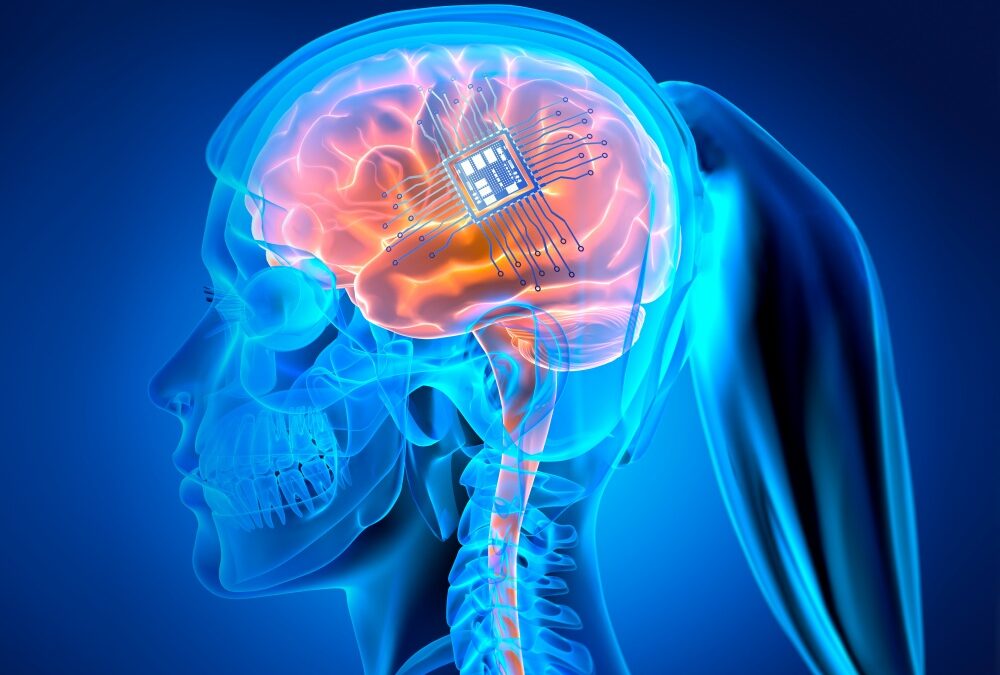Neuroplasticity, Neurogenesis, and synaptic plasticity and Stroke Recovery
The neural processes involved in functional recovery after a stroke, is reliant upon two mechanisms, neurogenesis and neuroplasticity.
Neurogenesis is the process of creating new neurons. This of course would be beneficial in the case of a stroke where neurons have been damaged/destroyed.
Neuroplasticity is the brains ability to adapt in response to new experiences. This is something that occurs throughout life.
Synaptic plasticity is a form of neuroplasticity that involves a change in the electrical signal between two neurons. The “synapse” is the space between two neurons and “plasticity” is the capacity for something to be moldable/changed. Hence, synaptic plasticity. The way that an electrical signal is transmitted is via chemicals called neurotransmitters.
Simplified, a neurotransmitter can either turn an adjoining neuron on (excitatory neurotransmitter) or off (inhibitory neurotransmitter). Synaptic plasticity involves several mechanisms whereby there is a change in the concentration of a neurotransmitters and/or a neurons ability to respond. When it comes to memory and/or learning a motor skill that we want to be able to repeat in the future, the brain rely’s on a mechanism called long-term potentiation (LTP).
LTP is a long lasting strengthening of a signal between to neurons that persists in response to a specific activity. If a neuron is repeatedly stimulated (repetitive practice of an activity), it will build more neurotransmitter receptors, and increase the amount of the neurotransmitter. Together, these two process will increase signal strength in that specific neural network.
What is BDNF and how does it work?
A growing body of evidence indicates that Brain-derived neurotrophic factor (BDNF) is a key player in multiple nerve communication processes. Simplified, BDNF is a molecule that triggers a cascade of actions on a neuron including neurogenesis (neuron growth), and synaptic plasticity (signal strength).
BDNF contributes to neurogenesis (growth of new neurons)
The current understanding is that BDNF binds to the TrKB receptor, triggering the neuron to grow more dendrites. Dendrites are the arms of a neuron that accept the neurotransmitters. More dendrites mean a stronger signal can be received from an adjoining neuron. Of note, current literature suggests this BDNF effect on a neuron is limited to specific brain areas. One area that has been identified is the hippocampus (brain area involved in memory and learning).
BDNF contributes to synaptic plasticity
Again, just to review, synaptic plasticity is the amount of signal strength between two neurons involving the release of a neurotransmitter to send the message. It is believed that BDNF regulates neurotransmitter release. In particular nitric oxide (NO), glutamate (excitatory neurotransmitter) and GABA (inhibitory neurotransmitter); and their receptors. In other words, BDNF might be one key that unlocks the door that allows the neurotransmitter to leave one neuron and the same key that opens the door of an adjoining neuron to allow that neurotransmitter to enter.
It is also believed that BDNF influences long-term potentiation (longer-lasting effects of signal strength). This process might be the result of BDNF influence on gene expression and/or protein synthesis.
Does BDNF Influence Stroke Recovery?
There is a growing body of evidence that suggests that BDNF can act as a repair agent after a stroke. However, the amount of BDNF (after a stroke) does not seem to be enough to overcome the cascade of events that are triggered by ischemia (lack of oxygen in the neuron). Therefore, pharmacologic and rehabilitation strategies have been identified as necessary interventions to increase the amount the BDNF expression. And in this area, there lies some potential opportunities to increase BDNF expression and functional recovery after a stroke.
Pharmacologic Interventions
The majority of the evidence suggests that BDNF can’t cross the blood-brain barrier (the filter that protects the brain). With that said, there does not currently seem to be a mechanism to get BDNF into the brain. Of note, there are ongoing studies that are investigating alternative means. One such study is working on creating a smaller molecule that can cross the blood-brain barrier. Other studies are investigating the potential of injecting a BDNF isoform directly into the damaged area of the brain. However, these studies have not yet proven to be effective.
Aerobic Exercise Increases BDNF expression
Multiple studies have shown a positive correlation between aerobic exercise, cognition, memory and BDNF expression in healthy people. Futhermore, there is considerable literature that increased BDNF expression improves learning, memory, and motor function in many disease processes, including stroke.
How much exercise is necessary to increase BDNF?
The consensus in the literature suggests 30 min of moderate intensity (heart rate goes up but you can still maintain a conversation), 4 days/week.
Aerobic exercise timing
There does appear to be an optimal time at which to perform your aerobic exercise. It is well documented that BDNF levels increase immediately following aerobic exercise. With that said, there are some who theorize that performing aerobic training prior to a cognitive/learning activity might prime the system to optimize synaptic plasticity.
Other articles you might like:
Movement over Emotion
If you have moments when you feel overwhelmed, congratulations. You are on the right path to your next big accomplishment. In the physical performance world, the overload principle simplified is the body’s adaptive response to physical stress. The result is growth....
Don’t judge a book.
“Judging others is bad”. Don’t judge a book by it’s cover. From our earliest age we are taught not to “judge” people. My definition of “judging” is when an opinion about someone is attached to a “value”. “Good people” and “Bad people”. “Good behavior” and “bad...
Strategy over “strength”
I am a “fixer”. I see problems or potential problems and I immediately jump in headfirst to “fix” said problem. I can also sometimes be an “avoider”. Look ahead to avoid potential problems. Finally, and most importantly, I am NOT a “tread-er.” Rarely do I find it...
Don’t believe your lying eyes
If you want to change an area of your life, start with the smallest habit you can consistently do to move you in that direction. Seeing is believing. Personally, this strategy has been effective with fitness, academic, and business goals. If you want to run a...
The tail of two nails
Whether you believe it to be true or false, you are right. A british journal published a case of a construction worker who jumped off a plank landing on a nail that punctured straight through his shoe emerging on the other side. In terrible pain, the man was sedated...
When “fantacy” overshadows reality
When was the last time you remember having to think about how to retrieve a glass of water from a table? If you are a healthy adult, probably never. You see, there are skills that require “motor planning”. However, most activities of daily living are automatic. That...
Why you strive for more
Health is the greatest gift; Contentment is the greatest wealth - Siddhartha Gautama Feeling a little bit of discontentment is an extremely effective motivation to move toward a specific goal. Folks with financial “wealth” will often credit their drive to growing up...
Choose your gemstones
Feeling frustrated by your lack of progress? If so, you are on the right track. BIG things are about to happen. Frustration is a sense of discouragement, anger, and annoyance because of unresolved problems or unfulfilled goals, desires, or needs. I don’t like feeling...
Why do you do what you do?
Why do we do what we do? “Good” behavior or “bad”, if progress is a high priority, it’s an essential question. Are you doing what you need to do to make progress? If not, you aren’t alone. I think we have all had a time in our lives when we lacked confidence in our...
Secret to win the game of life
"Just look on the brite side". I was recently watching a self-proclaimed “optimist” teach about all the benefits of optimism. His second most jarring statement was something like, “You must be an optimist to succeed.” I will “circle back” to number one....











